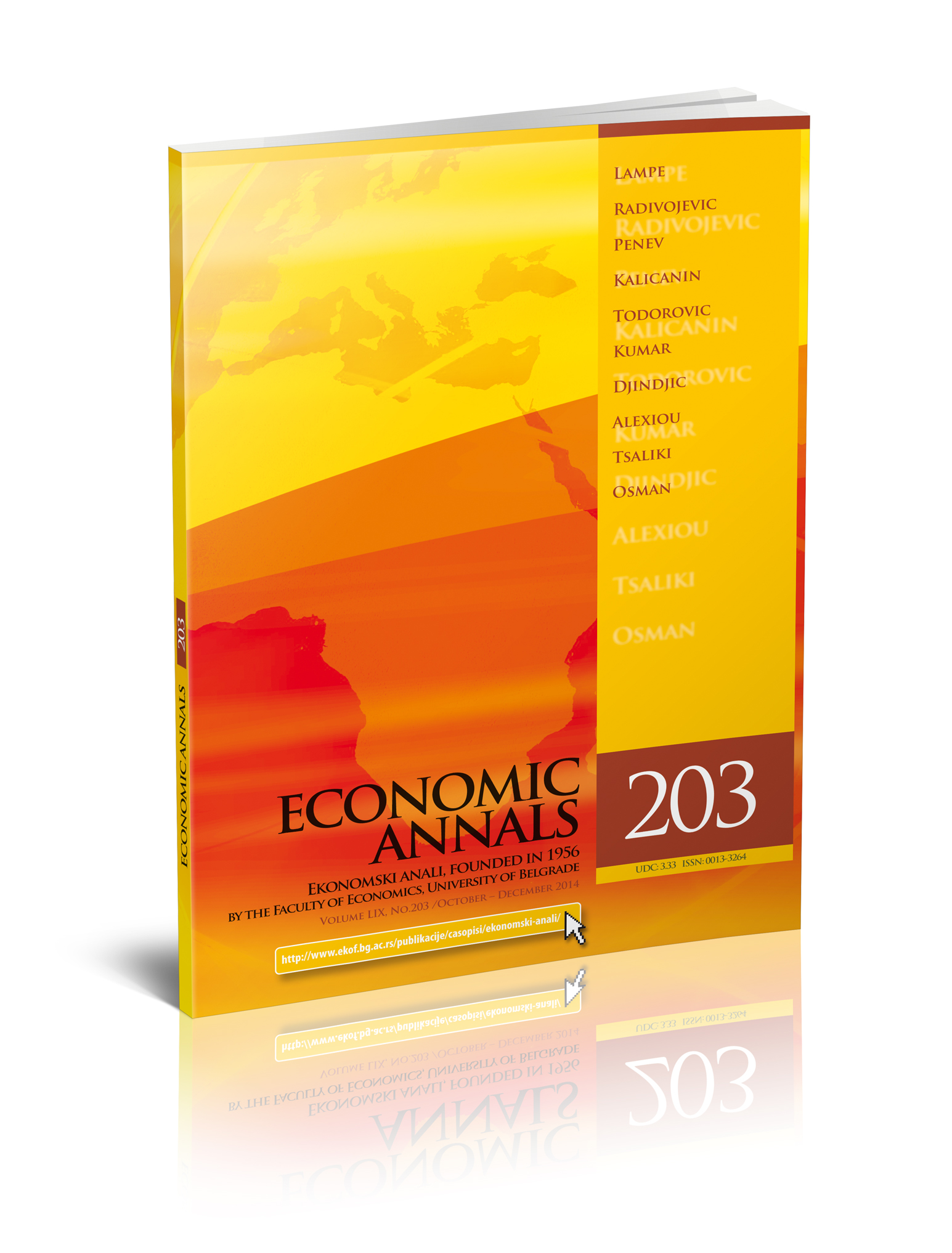STABILIZING SOUTHEASTERN EUROPE, FINANCIAL LEGACIES AND EUROPEAN LESSONS FROM THE FIRST WORLD WAR
##plugins.themes.bootstrap3.article.main##
##plugins.themes.bootstrap3.article.sidebar##
John R. Lampe
Abstract
This paper pays brief attention,although more than the recent flood of 1914 centenary books, to economic causes of the First World War before turning to it fateful economic consequences for Southeastern Europe. The Austrian lack of economic leverage over Serbia is cited as a reason for its resort to the military option. At the war’s end, the option of the victorious powers to provide significant economic relief to the region where the conflict had begun was not taken. After tracking the brief, limited assistance provided, the paper reviews to the massive economic problems confronting four of the five of independent states, neglecting Albania as a special case, that could now be called Southeastern Europe. First Greece and then Bulgaria faced forced inflow of refugees. Romania and the Yugoslav Kingdom faced the economic integration of large new, formerly Austro-Hungarian lands. All of them were left not only with war deaths and destruction but also with large war debts, or in Bulgaria’s case, reparations. The paper concentrates on the primary Western response to these four economies, an effort led by the Bank of England to replace immediate postwar inflation with the deflation needed to reestablish currencies with prewar convertibility to gold, now with Pound Sterling added to a gold reserve standard. Independent central banks, the major positive legacy of this initiative, were to lead the way. But the financial stability that all four economies did eventually achieve in the 1920s served only to reduce their war debts. Otherwise, maintaining the fixed and overvalued exchange rates restricted domestic credit, encouraged protective tariffs, and did not attract the foreign capital, especially new state loans, that this emphasis on a single, European financial framework had promised. A concluding section considers the lessons learned from a postwar period that promoted economic disintegration by the 1930s. Looking at the period since the end of the Cold War and then the wars of Yugoslavia’s dissolution, we see EU leadership in the reduction of trade barriers, the promotion of common fiscal practice and the prospect of genuine European integration as Western lessons learned. Within the region, independent central banks have helped the process. But the stabilization of currencies around the overvalued Euro has posed a familiar post- 1918 problem since the European downturn of 2008.
##plugins.themes.bootstrap3.article.details##
Keywords
financial stabilization, refugees, war debts, reparations, national currencies, gold reserve standard, central banks, Bank of England, foreign trade and foreign investment, capital markets
JEL Classification
N10, N14, P52
Issue
Section
Articles
How to Cite
R. Lampe, J. (2014). STABILIZING SOUTHEASTERN EUROPE, FINANCIAL LEGACIES AND EUROPEAN LESSONS FROM THE FIRST WORLD WAR. Economic Annals, 59(203), 7-28. https://doi.org/10.2298/EKA1403007L
How to Cite
R. Lampe, J. (2014). STABILIZING SOUTHEASTERN EUROPE, FINANCIAL LEGACIES AND EUROPEAN LESSONS FROM THE FIRST WORLD WAR. Economic Annals, 59(203), 7-28. https://doi.org/10.2298/EKA1403007L

